
Recently, the HugAILab team of East China Normal University developed the HugNLP framework, which is a comprehensive and unified NLP training framework for researchers and developers. It can support text classification, text matching, question and answer, information extraction, text Build and train models for various NLP tasks such as generation and small sample learning.

##Open source address: https://github.com/HugAILab/HugNLP
Paper: https://arxiv.org/abs/2302.14286
It is worth noting that HugNLP also integrates a large number of the latest Prompt technologies, such as Prompt-Tuning, In-Context Learning, Instruction-tuning, and Chain-of-thought will be introduced in the future
The HugAILab team has also developed a series of applications, such as CLUE&GLUE ranking tools, It can support ChatGPT model training and deployment product HugChat, as well as unified information extraction product HugIE, etc.
HugNLP is a layered framework that follows the development model of "high cohesion and low coupling". Its core includes model layer (Models), processor layer (Processors), and evaluator. There are four parts: Evaluators and Applications.
The framework diagram is as follows:
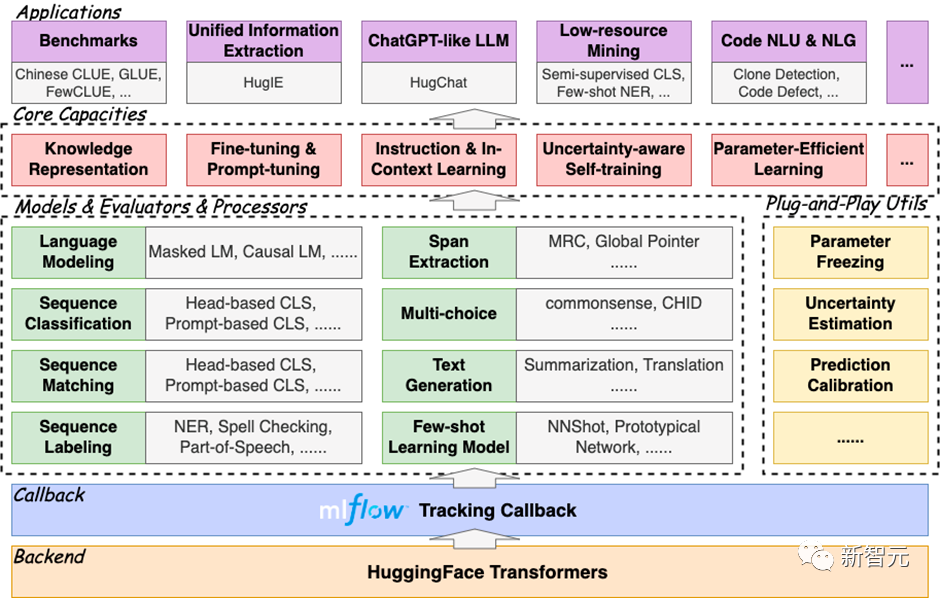
The HugNLP framework is called comprehensive because it integrates a large number of NLP task models. The ones that have been implemented include:
, you only need to execute three lines of code: git clone https://github.com/HugAILab/HugNLP.gitcd HugNLPpython3 setup.py install
Benchmark one-click ranking;
为了验证框架的有效性,在22年9月提交了CLUE榜单的刷榜结果,选择一系列中文小模型(RoBERTa、MacBERT、P-BERT等)并结合了logits集成方法,至今依然维持在第15名位置,曾一度超越了部分企业。
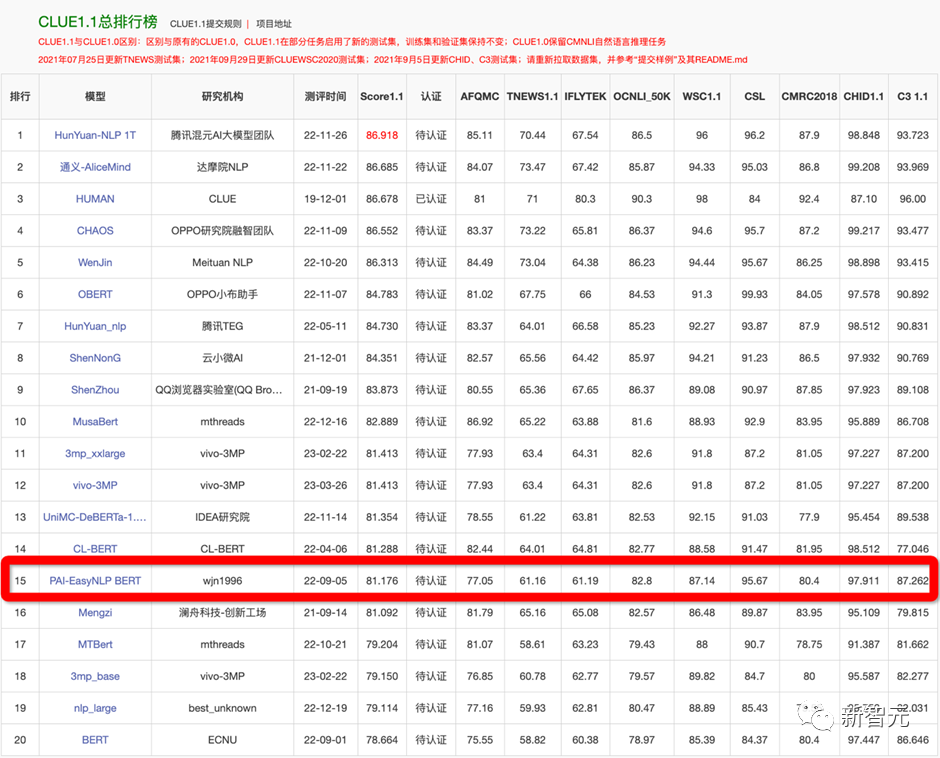
例如如果训练CLUE榜单的AFQMC数据集,可编辑文件
applications/benchmark/clue/clue_finetune_dev.sh
修改参数:
--user_defined="data_name=afqmc"
执行下列命令即可:
bash applications/benchmark/clue/clue_finetune_dev.sh
同样的方法还可以训练一些常用的NLP任务,例如阅读理解、实体识别、以及GLUE英文数据集等。
HugNLP还集成了一系列模型用于刷榜,例如BERT、RoBERTa、DeBERTa、MacBERT、Erlangshen等。
传统的一些预训练模型(例如BERT、GPT2等)是在通用语料上训练的,而对领域事实知识可能不敏感,因此需要显式的在预训练阶段注入事实知识。
HugNLP实现了多个知识增强预训练技术,其中包括DKPLM和KP-PLM。可分解的知识注入方法DKPLM和将结构化知识转化为自然语言形式的注入方法KP-PLM是两种不同的注入方式。由于这些知识注入方法采用的是可插拔式的设计,因此无需改变模型结构,这使得在下游任务上进行微调非常容易。
执行下面命令即可进行Masked Language Modeling和Causal Language Modeling的预训练:
bash applications/pretraining/run_pretrain_mlm.shbash applications/pretraining/run_pretrain_casual_lm.sh
Pre-training和Fine-tuning模式通常被遵循,以基于预训练语言模型的NLP。HugNLP也包含Fine-tuning技术。
3.1 参数有效性学习
HugNLP集成了包括Prefix-tuning、Adapter、BitFit、LoRA等参数有效性训练方法,可以加速模型的训练,降低显存占用量。

在训练脚本中,只需要添加一行参数,即可开启参数有效性训练:
--use_freezing
对于参数有效性方法,HugNLP实现了若干类别的分类模型,如下所示:
CLASSIFICATION_MODEL_CLASSES = { "head_prefix_cls": { "bert": BertPrefixForSequenceClassification, "roberta": RobertaPrefixForSequenceClassification, }, "head_ptuning_cls": { "bert": BertPtuningForSequenceClassification, "roberta": RobertaPtuningForSequenceClassification, }, "head_adapter_cls": { "bert": BertAdapterForSequenceClassification, "roberta": RobertaAdapterForSequenceClassification, }, "masked_prompt_cls": { "bert": PromptBertForSequenceClassification, "roberta": PromptRobertaForSequenceClassification, }, "masked_prompt_prefix_cls": { "bert": PromptBertPrefixForSequenceClassification, "roberta": PromptRobertaPrefixForSequenceClassification, }, "masked_prompt_ptuning_cls": { "bert": PromptBertPtuningForSequenceClassification, "roberta": PromptRobertaPtuningForSequenceClassification, }, "masked_prompt_adapter_cls": { "bert": PromptBertAdapterForSequenceClassification, "roberta": PromptRobertaAdapterForSequenceClassification, }, }只需要指定下面参数即可,例如选择adapter进行分类:
--task_type=head_adapter_cls
3.2 对抗训练:引入对Embedding的扰动,提高模型的鲁棒性
HugNLP框架集成了若干种对抗训练的方法,其中最简单的对抗方法为FGM算法:
在训练时,只需要添加一行参数,即可默认调用FGM算法:
--do_adv
3.3 Prompt-tuning:通过模板来复用预训练目标
传统的Fine-tuning在低资源场景下容易出现过拟合问题,因此复用预训练的目标可以拉近Pre-training和Fine-tuning之间的语义差异。
HugNLP集成了PET、P-tuning、Prefix-tuning等Prompt-Tuning算法,并无缝嵌入在NLP分类任务的模型里。
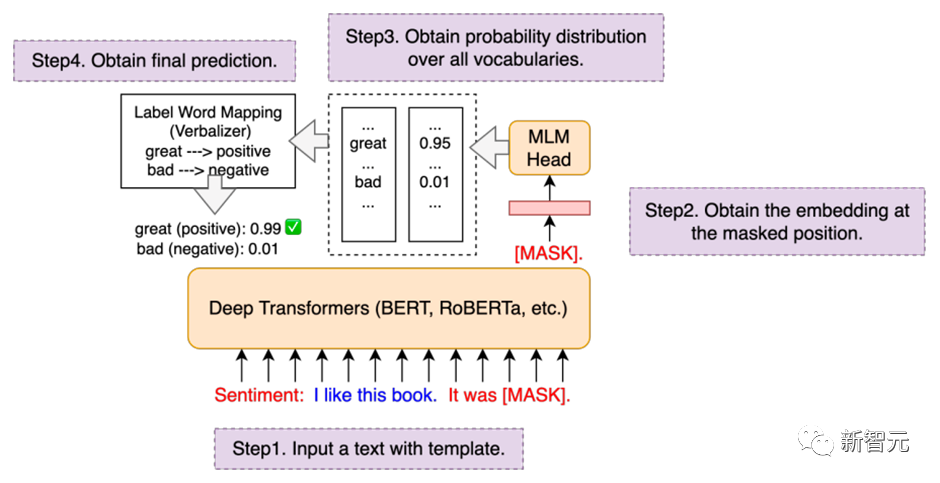
在训练时,只需要指定下面两个参数,即可以开启Prompt-tuning模式,例如选择p-tuning算法:
--task_type=masked_prompt_ptuning_cls--use_prompt_for_cls
在构建通用人工智能之前,必须将不同类型的自然语言处理任务进行范式统一,尤其是在大模型时代。HugNLP为此定义了三种统一范式的思想:
基于三种不同的范式统一,HugNLP推出两个核心产品,分别是:
4.1 HugChat:基于Causal Language Modeling的生成式对话模型
最近ChatGPT火爆全球,为了让研究者可以训练自己的ChatGPT,HugNLP框架集成了基于生成式Instruction的训练产品——HugChat,其支持各种类型的单向生成式模型的训练,例如GPT-2、GPT-Neo、OPT、GLM、LLaMA等。
在8张V100 32G的条件下,可训练OPT-13B大模型。HugAILab团队公布了大约200万条英文和300万条中文的对话数据,以用于模型训练。例如训练GPT-2(XL),可直接执行脚本:
bash ./application/instruction_prompting/HugChat/supervised_finetuning/run_causal_instruction_gpt2_xl.sh
使用基于HugNLP训练的GPT-2(1.3B)模型可以轻松地完成对话任务。只需要执行如下命令即可玩转HugChat:
python3 applications/instruction_prompting/HugChat/hugchat.py
例如可以写套磁信邮件:
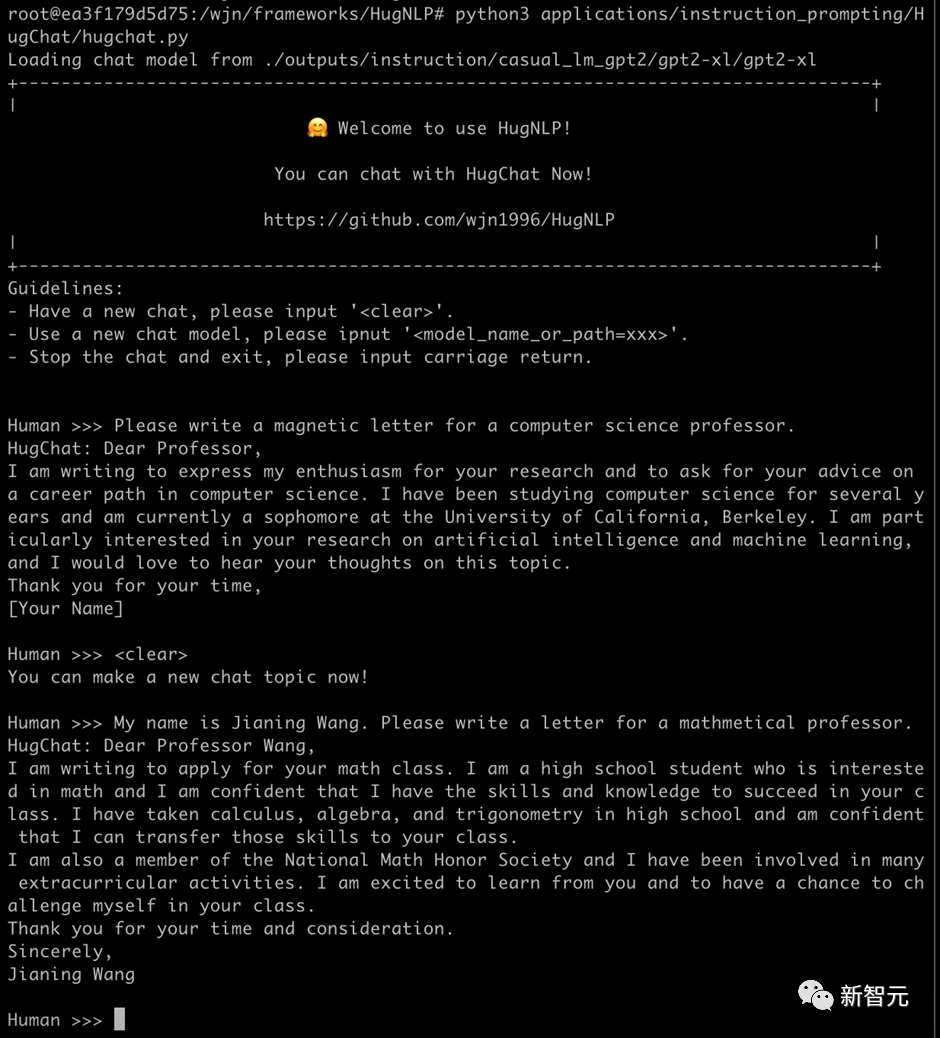
再例如搜索谷歌地球的相关信息:
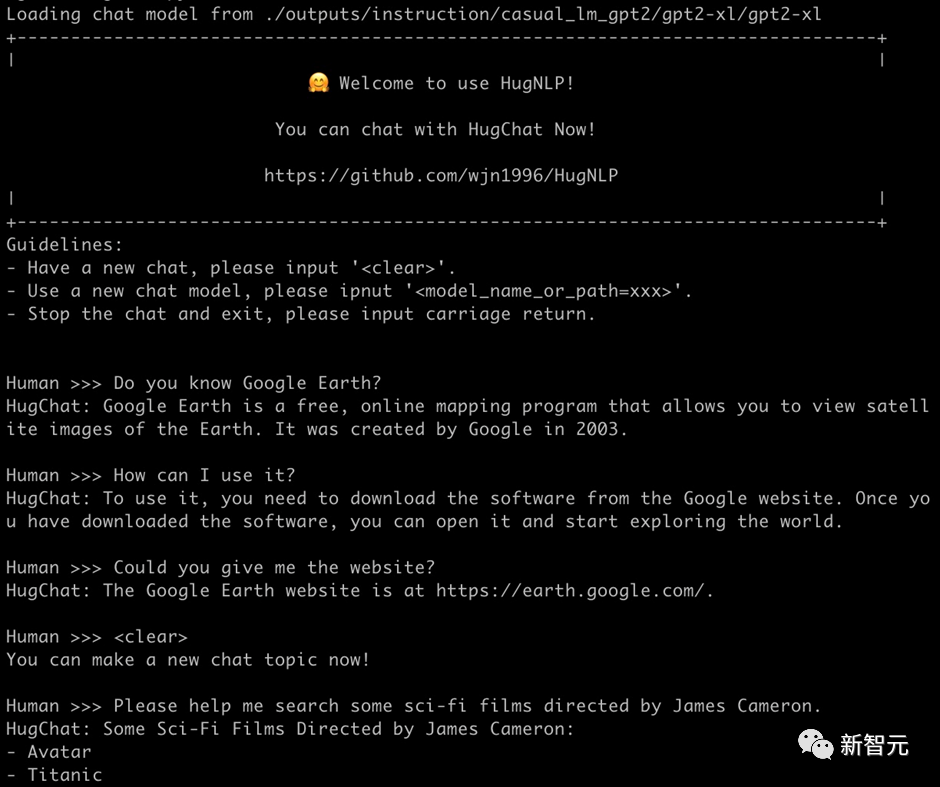
也可以实现编写简单的代码(1.3B的模型具备此能力已经很惊叹了!):
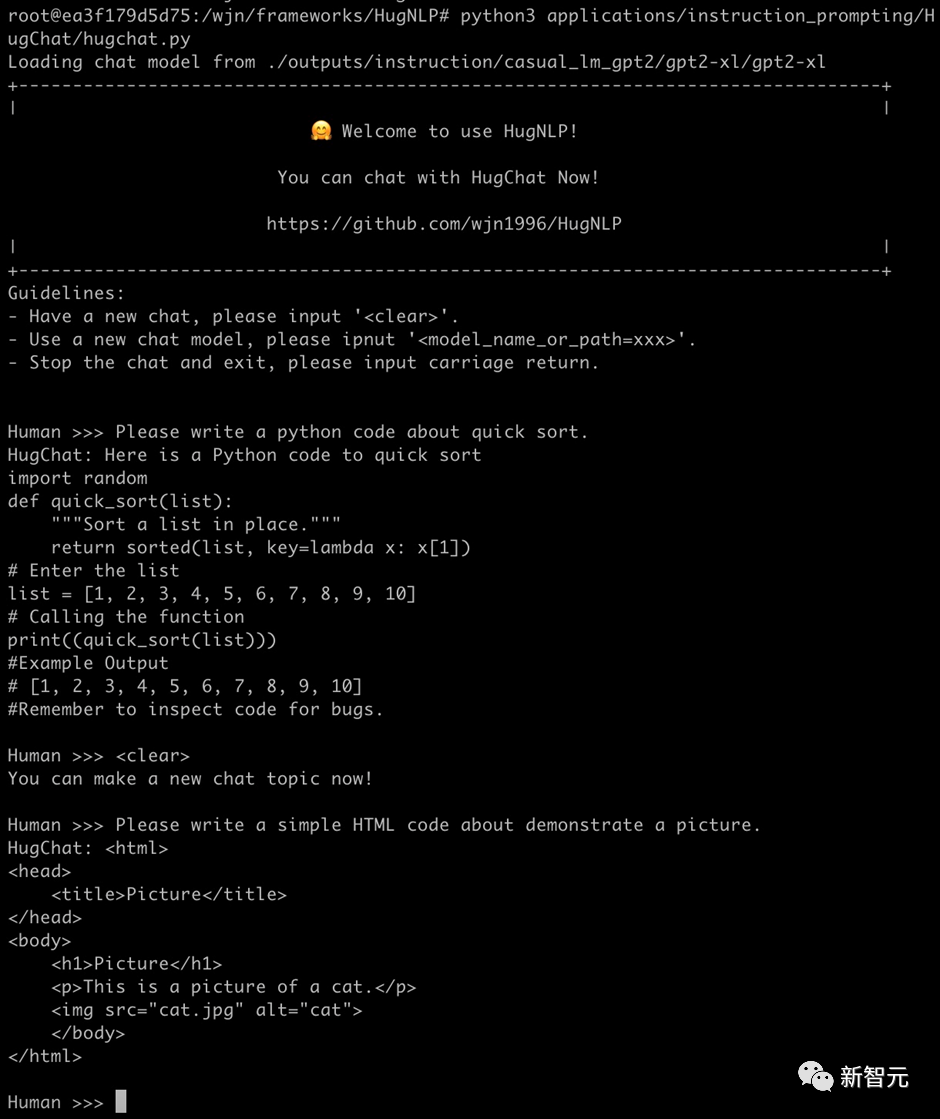
HugNLP目前正在开发其他类型的Decoder-only大模型,相关信息和开源内容如下表所示:
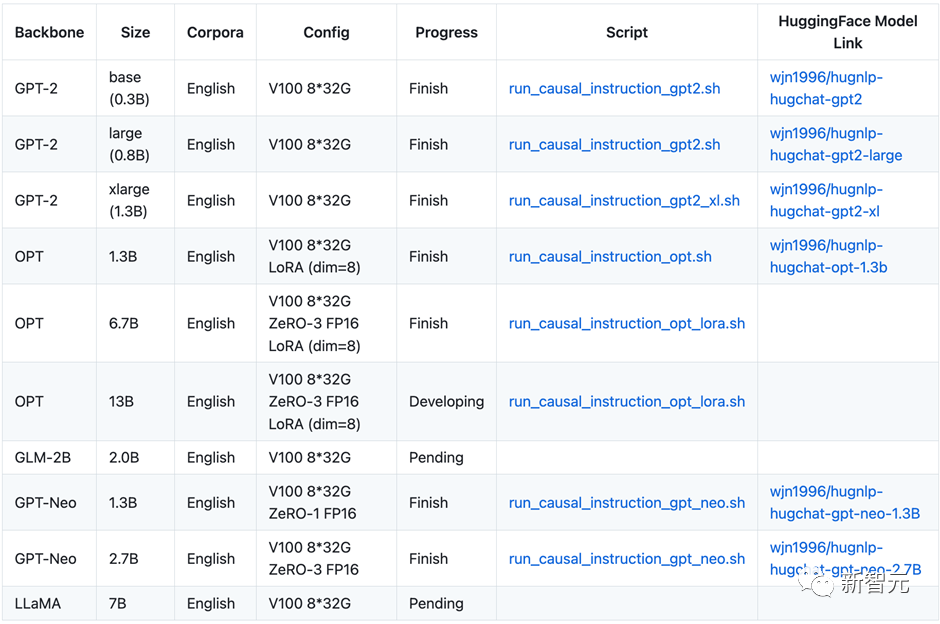
HugChat后期将推出垂直领域的大模型解决方案,同时将与OpenAI API进行融合,推出大模型服务框架。
4.2 HugIE:基于Global Pointer的统一信息抽取框架
信息抽取(Information Extraction)旨在从非结构化的文本中抽取出结构化信息,是构建知识库的重要步骤之一。通常信息抽取包括两个核心步骤,分别是命名实体识别(Named Entity Recognition)和关系抽取(Relation Extraction)。
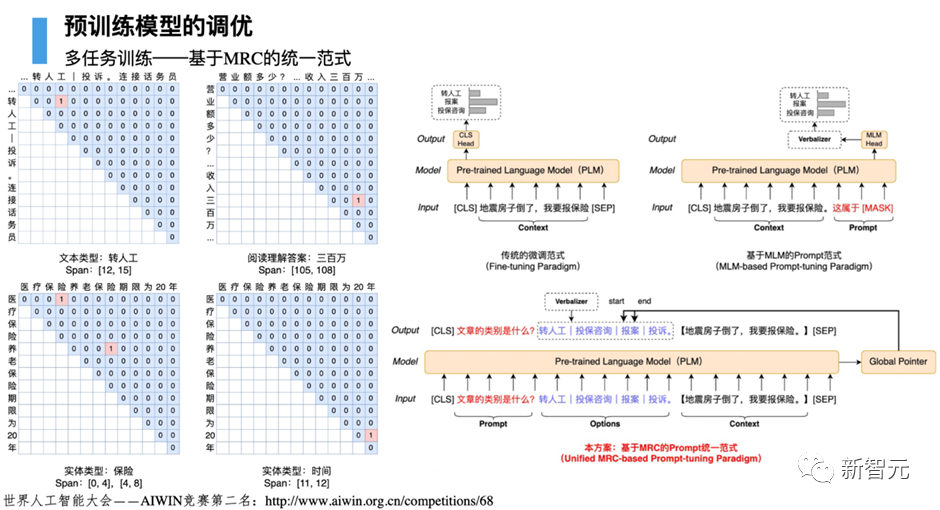
我们基于HugNLP研发一款HugIE产品,旨在实现统一信息处理。其主要核心包括如下几个部分:
HugIE目前已经开源了模型:https://huggingface.co/wjn1996/wjn1996-hugnlp-hugie-large-zh 可以基于HugNLP框架使用HugIE抽取模型,如下图所示:
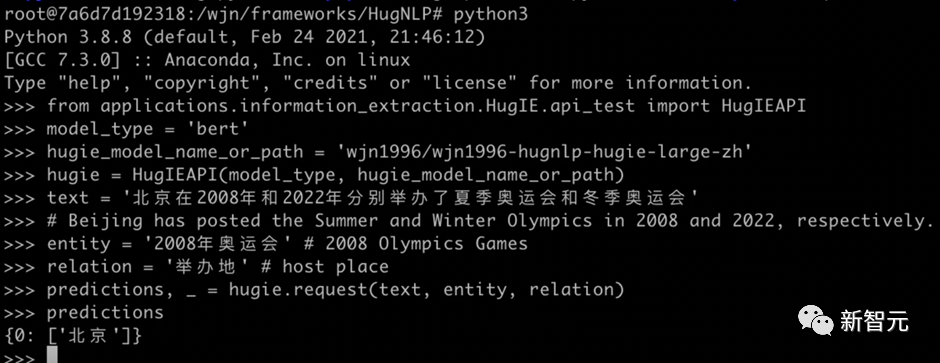
In-Context Learning(ICL) 首次由GPT-3提出,其旨在挑选少量的标注样本作为提示(Prompt),从而在形式上促使大模型生成目标答案。ICL的优势在于无需对参数进行更新,即可实现惊艳的效果。

HugNLP框架集成了ICL,主要涉及到样本的挑选和预测结果的校准两个部分:

目前ICL已经集成在HugNLP里,只需要指定下面参数即可:
--user_defined="data_name=xxx num_incontext_example=4 l=1 use_calibrate=True"--use_prompt_for_cls
半监督旨在同时结合标注数据和无标签数据来训练NLP任务。Self-training是一种简单但有效的迭代式训练方法,其通过Teacher模型先获取伪标签,对伪标签进行去噪后,再训练Student模型。Self-training方法传统上存在着较多噪声,可能会削弱训练结果。
为了提高性能,HugNLP引入成熟的Uncertainty-aware Self-training技术。框架图如下所示:
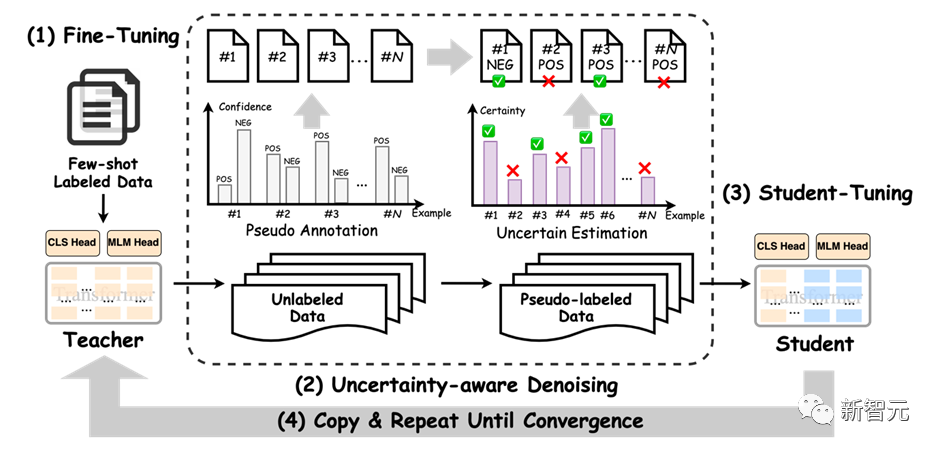
其采用了来自贝叶斯推断中的MC Dropout技术,即对Teacher模型执行 次推理,每次推理开启Dropout开关,从而得到若干与Teacher模型满足独立同分布的模型预测。
基于这些预测结果,可以通过信息熵的变化量得到Teacher模型对无标签数据的不确定性量化指标(即BALD算法),核心公式如下:

进行多次DC Dropout的代码实现如下(详见hugnlp_trainer.py):
y_T = list()for i in tqdm(range(T)): y_pred = [] for step, inputs in enumerate(unlabeled_dataloader): _, logits, __ = self.prediction_step(model, inputs, prediction_loss_only, ignore_keys=ignore_keys) y_pred.extend(logits.detach().cpu().numpy().tolist()) predict_proba = torch.softmax(torch.Tensor(y_pred).to(logits.device), -1) y_T.append(predict_proba.detach().cpu().numpy().tolist()) y_T = np.array(y_T)#compute mean y_mean = np.mean(y_T, axis=0)BALD算法实现如下:def get_BALD_acquisition(y_T):expected_entropy = - np.mean(np.sum(y_T * np.log(y_T + 1e-10), axis=-1), axis=0)expected_p = np.mean(y_T, axis=0)entropy_expected_p = - np.sum(expected_p * np.log(expected_p + 1e-10), axis=-1)return (entropy_expected_p - expected_entropy)
HugNLP使用半监督模式,只需要做两件事:
(1)执行脚本时添加参数:
--use_semi
(2)在指定的数据集目录下,存放unlabeled data文件。
HugNLP has developed numerous applications as listed below, and there are many more exciting applications currently under development.。HugNLP欢迎有志之士加入HugAILab参与开源开发工作。
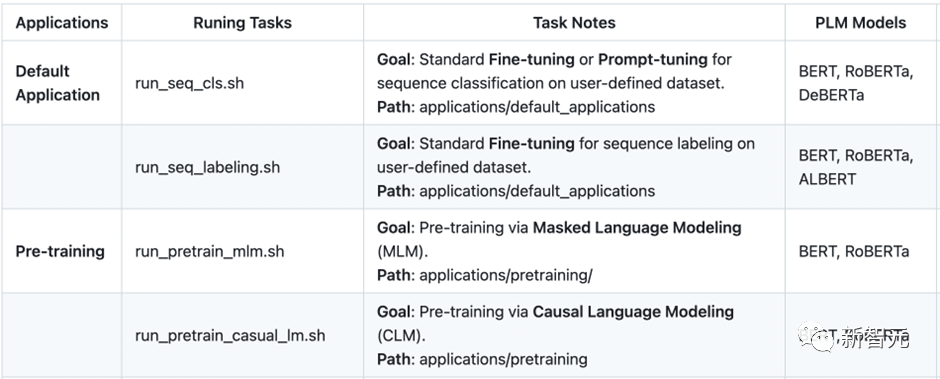
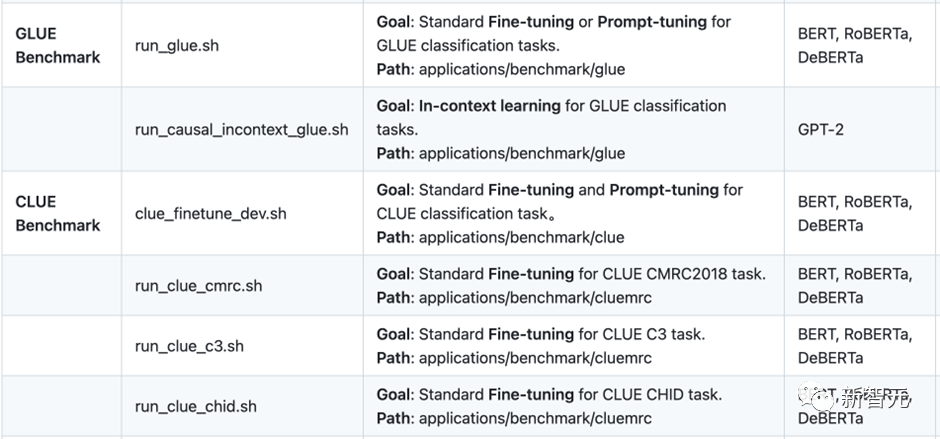
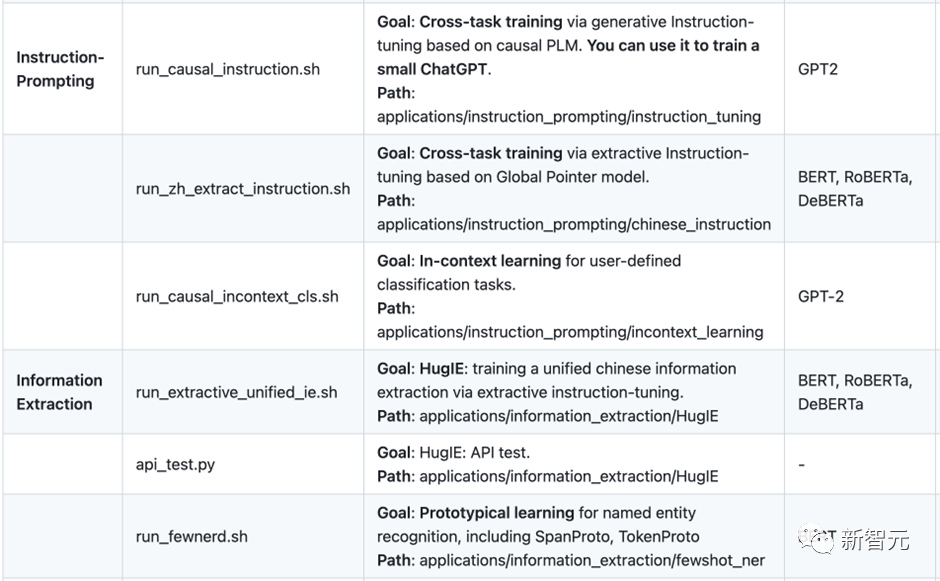

The above is the detailed content of ChatGPT models can be directly trained! East China Normal University and NUS open source HugNLP framework: refresh the rankings with one click and fully unify NLP training. For more information, please follow other related articles on the PHP Chinese website!
 The difference between PD fast charging and general fast charging
The difference between PD fast charging and general fast charging
 How to share printer in win10
How to share printer in win10
 WAN access settings
WAN access settings
 java export excel
java export excel
 Virtual mobile phone number to receive verification code
Virtual mobile phone number to receive verification code
 The difference between lightweight application servers and cloud servers
The difference between lightweight application servers and cloud servers
 Complete collection of HTML tags
Complete collection of HTML tags
 The role of index
The role of index




